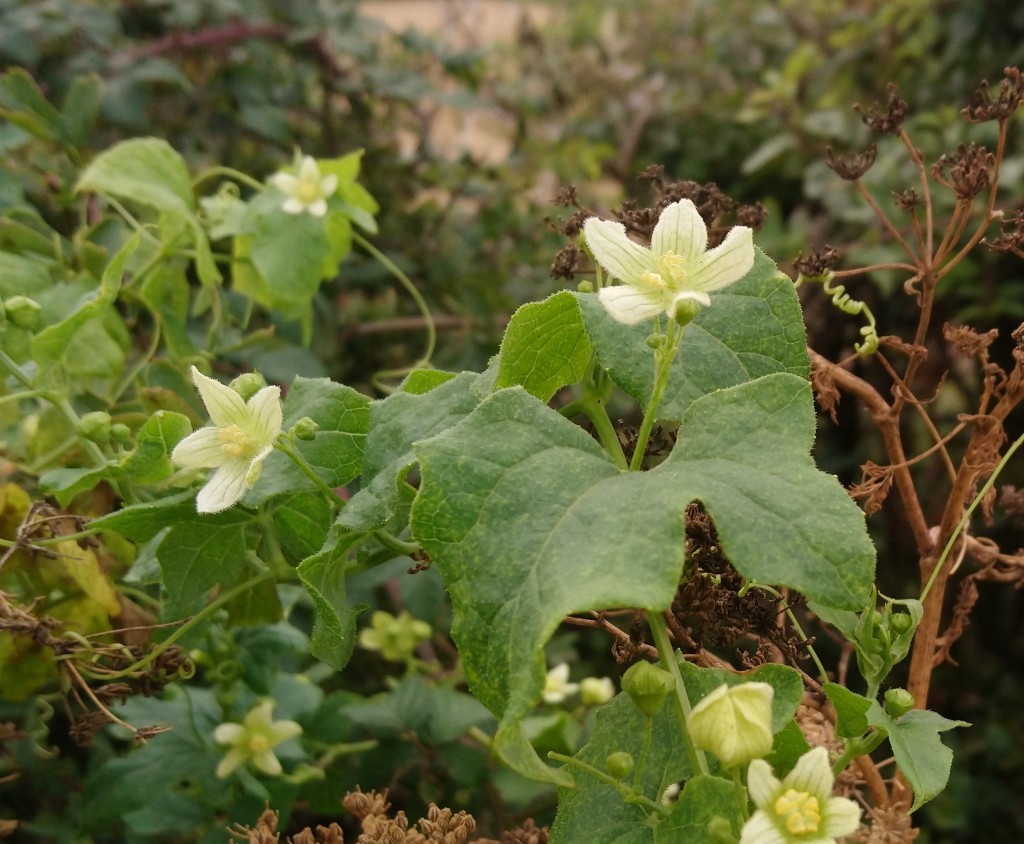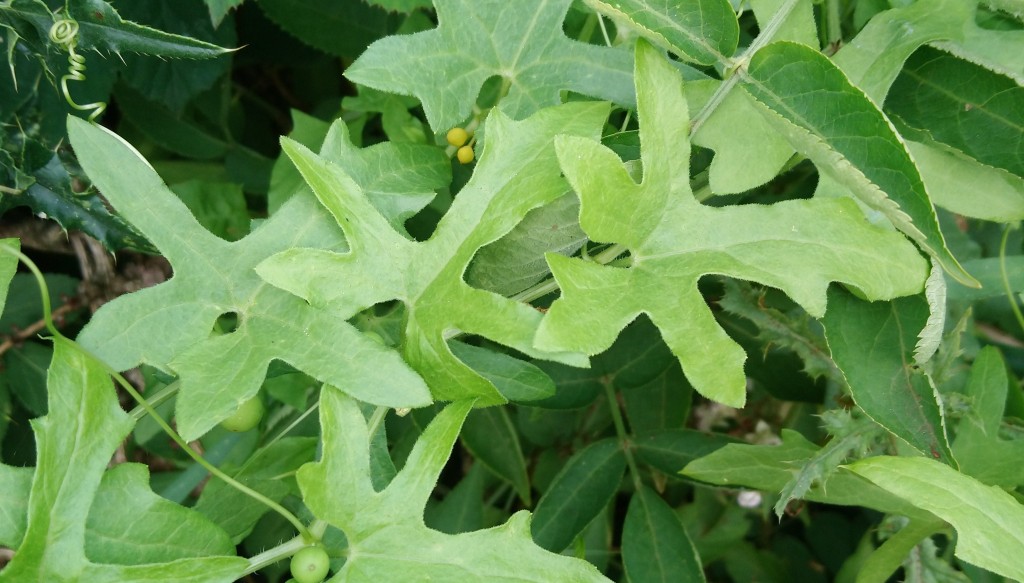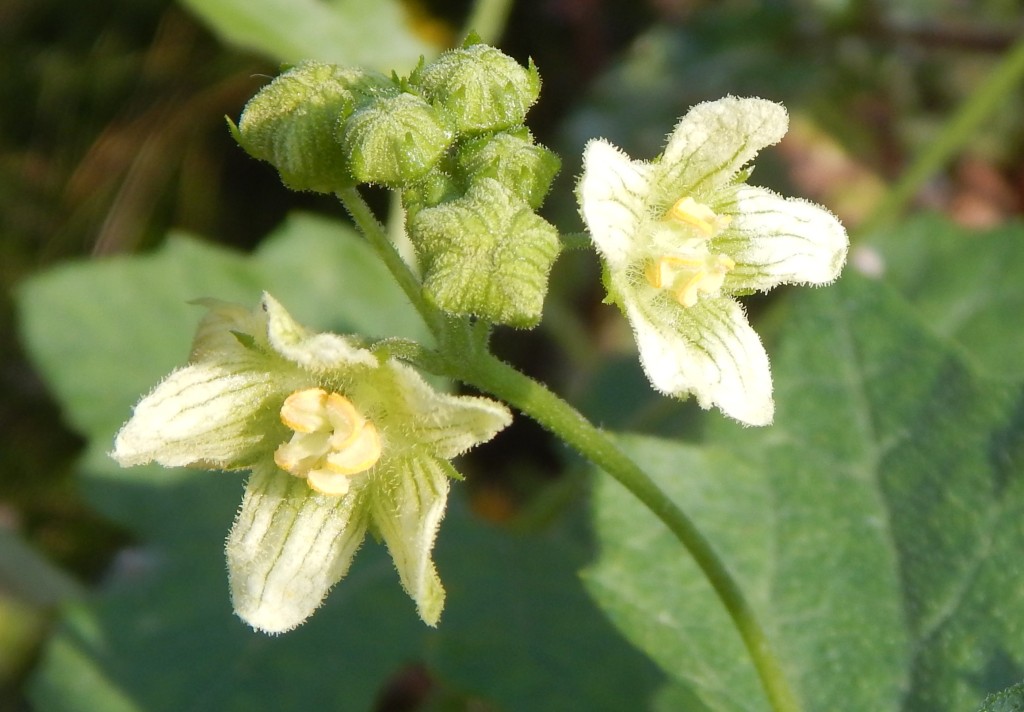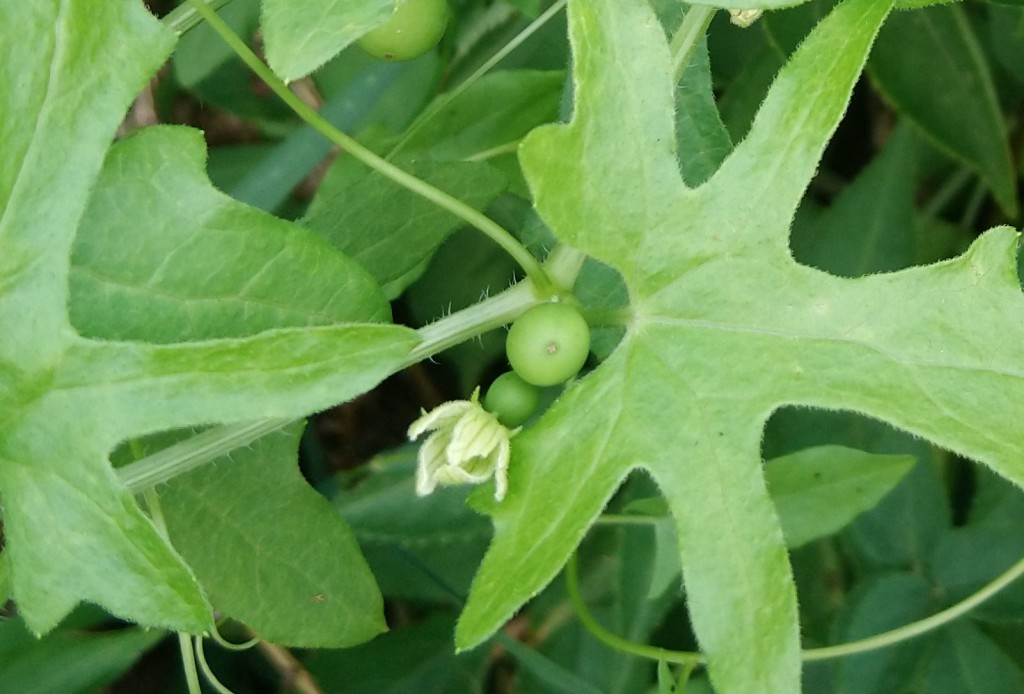
[058] Bryonia alba, White Bryony
Introduction
Bryonia alba, White Bryony, is a wild climbing plant native to Britain, with small, attractive, white flowers.
Bryonia is a small genus, all called Bryony. Somewhat confusingly, Bryonia dioica, Red Bryony, is also sometimes called White Bryony. Note also that the unrelated (but visually similar) Discorea communis is called Black Bryony.
To complete the confusion Bryonia alba has several other names – Wild Hops (though not a hop), Wild vine (though not a grape), English Mandrake (not a Mandrake), False Mandrake, Wild Nep (It’s not nepeta), Ladies’ seal and tetterbury.
Taxonomy
Kingdom – Plants
Division – Vascular Plants
Class – Angiosperms (Flowering Plants)
Order – Cucurbitales
Family – Cucurbitaceae
Genus – Bryonia
Scientific Name – Bryonia alba
Name
Bryonia is a Latinized version of its name in Ancient Greek. This another one where the common name seems to come from the Latin version. Alba is, of course, Latin for white.
Description
Bryonia alba is a perennial climbing plant with distinctive palmately lobed leaves.

The flowers are white or very light green with hairy edges that give it a silvery look.

The fruit is a small berry, just beginning to develop in the next picture. It eventually turns black.

[You can understand some of the confusion with names if you realise that White Bryony has white flowers and black berries; Red Bryony, also known as White Bryony, has white flowers with red berries; and Black Bryony also has white flowers with black berries.]
All parts of the plant are poisonous.
Habitat and use
White Bryony is native to Britain and Europe. It is available as a garden plant.
It can become an aggressive, invasive plant and can climb over other plants, trees, fences and buildings. It is not an easy plant to eradicate.
Other Notes
Bryony, sometimes with variation in spelling, can be used as a girl’s name.
It’s not clear why this plant has not become such an unwanted weed in this country. I don’t see it as often as several other invasive species.
See also
The only similar plants are some of our climbing plants, none of which are closely related.
